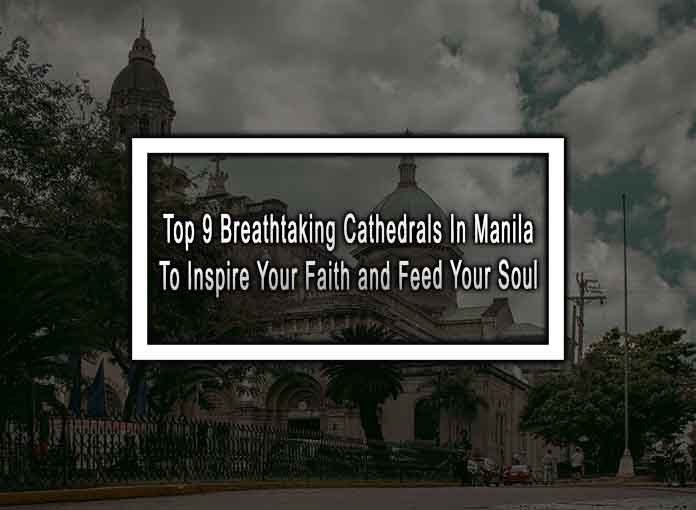Cathedrals in Manila: Embarking on a Spiritual Journey
Manila, the bustling capital of the Philippines, is not just a melting pot of cultures and histories but also a sanctuary of spiritual landmarks that evoke awe and reverence. In this vibrant city, centuries-old cathedrals stand as a testament to the deep-seated faith and artistry that have shaped the archipelago’s identity. For both pilgrims and tourists, these cathedrals in Manila are more than just places of worship—they are architectural marvels and historical treasures wrapped up in one. Let’s take a walk through the hallowed halls of most magnificent cathedrals in Manila that will not only lift your spirit but also provide a feast for the eyes.
1. Manila Cathedral: The Iconic Pillar of Faith
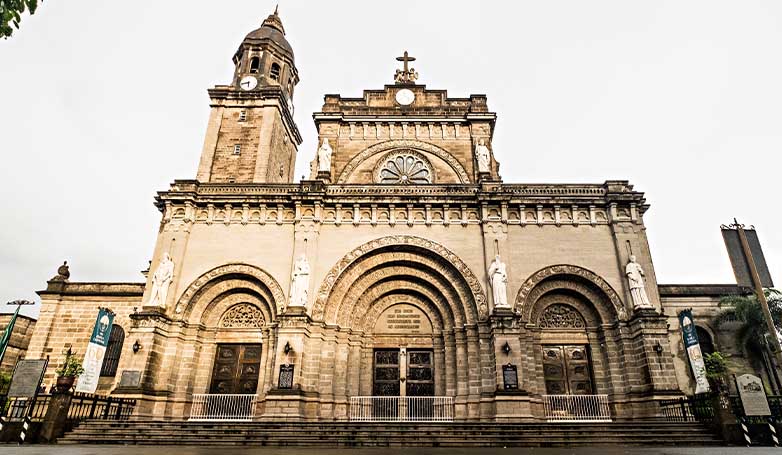
The Manila Cathedral, also known as The Minor Basilica and Metropolitan Cathedral of the Immaculate Conception, has been a symbol of the Catholic Church in the Philippines for centuries. The original cathedral was built in 1581 but had been damaged and rebuilt multiple times due to earthquakes, fires, and wartime destruction. The current structure is the eighth iteration, completed in 1958 after being destroyed in World War II.
Facts:
- The Manila Cathedral is the seat of the Archbishop of Manila and is located within the historic walled city of Intramuros.
- Pope John Paul II visited the cathedral twice during his papacy, and it has been the site of several important ecclesiastical events, such as the Papal Masses.
- The cathedral features impressive stained glass windows and a rosette window on its facade, modeled on the cathedral’s original design from 1870.
2. San Agustin Church: The Historic Gem of Intramuros

One of the Cathedrals in Manila is the San Agustin Church, the oldest stone church in the Philippines. Constructed in 1587, it stands as a premier example of Philippine colonial architecture. Having survived numerous earthquakes and the Battle of Manila in 1945, the church maintains much of its original structure and baroque design.
Facts:
- San Agustin Church was designated a UNESCO World Heritage Site in 1993, as part of the Baroque Churches of the Philippines.
- Its ceiling paintings are a notable feature, created to give the illusion of a dome when in fact the ceiling is completely flat.
- The church houses a museum with religious artifacts, art, and vestments that capture the cultural and religious heritage of the Philippines.
3. Quiapo Church: The Devotional Hotspot for the Black Nazarene
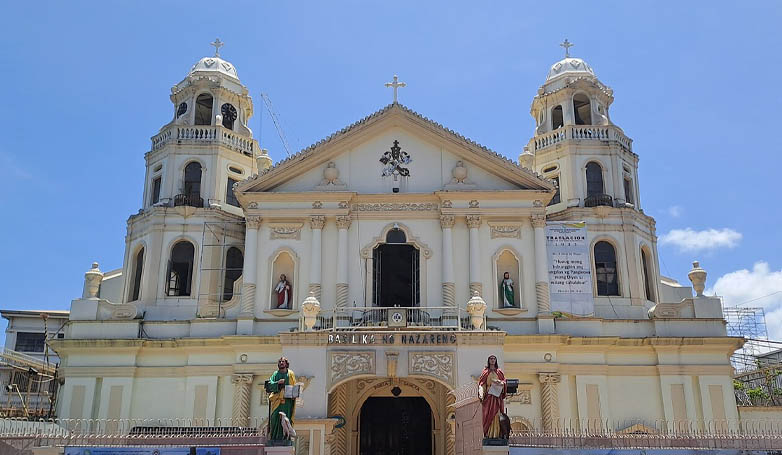
Quiapo Church, formally known as the Minor Basilica of the Black Nazarene, is one of Manila’s most famous religious venues due to the icon it houses: the Black Nazarene. The original structure was established in 1588 but the current baroque church was completed in the 18th century. The Black Nazarene is said to have miraculous powers and draws millions of devotees, especially during its annual procession.
Facts:
- The Black Nazarene is a life-sized, dark wooden sculpture of Jesus Christ carrying the cross, believed to have been brought from Mexico in the 1600s.
- The Feast of the Black Nazarene, held on January 9th, is one of the largest and most intense religious gatherings in the country.
- Quiapo Church also serves as a major center for the sale of religious articles, devotional items, and herbal medicines.
4. San Sebastian Church: The Gothic Marvel of Steel
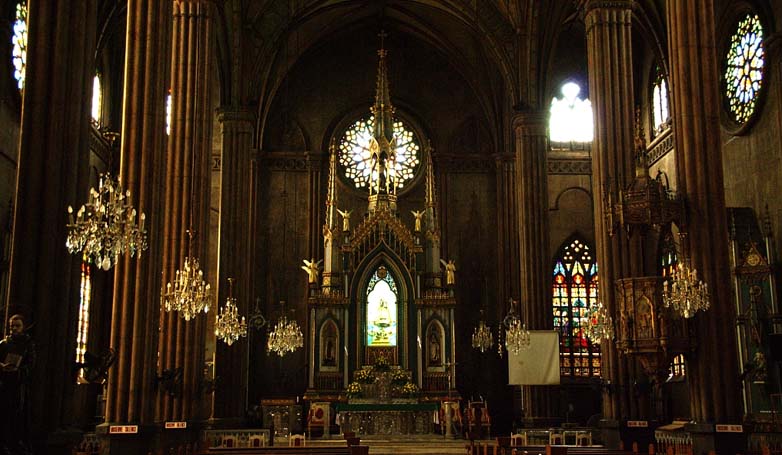
The Basilica Minore de San Sebastian, better known as San Sebastian Church, is the only all-steel church or basilica in Asia. The structure was completed in 1891 and is known for its Gothic Revival architecture. It was prefabricated in Belgium and then shipped to the Philippines where it was assembled.
Facts:
- San Sebastian Church is the first prefabricated steel church in the world and was designated as a National Historical Landmark.
- Its steel parts were manufactured by Société Anonyme des Enterprises de Travaux Publiques in Belgium and were transported in eight shipments to the Philippines.
- The church was designed by Spanish architect Genaro Palacios, with Gustave Eiffel, the engineer behind the Eiffel Tower and Statue of Liberty, allegedly involved in its construction.
5. Binondo Church: The Fusion of Faiths in Manila’s Chinatown

Binondo Church, also called the Minor Basilica of St. Lorenzo Ruiz, is located in the district of Binondo, which is known as the world’s oldest Chinatown. The original building dates back to 1596 when Dominican priests served the Chinese settlers who had converted to Christianity. The current structure was rebuilt several times due to damage by natural disasters and war, with the latest significant reconstruction efforts taking place after World War II.
Facts:
- Binondo Church is dedicated to San Lorenzo Ruiz, the first Filipino saint who was a Chinese-Filipino and served as an altar boy in the church.
- The church features a mixture of Spanish Baroque and Chinese styles, reflecting the cultural blend of the area.
- The octagonal bell tower is the only remaining part of the 16th-century structure; the rest of the church has been modernized over the centuries.
6. Malate Church: The Seaside Sanctuary with a View

Officially known as the Parish of Our Lady of Remedies, Malate Church is a Baroque-style church located in the Malate district of Manila, Philippines. It was built originally by the Augustinians in the late 16th century and is dedicated to the Nuestra Señora de los Remedios, the patroness of childbirth. The church has withstood destruction during World War II and has gone through several restorations. Its iconic facade features intricate carvings and sculptures, and the church houses historic objects, such as an 18th-century image of the Virgin Mary.
Facts:
- The church was used as a fortress by British forces when they occupied Manila in 1762 during the Seven Years’ War.
- Malate Church’s unique touches include Chinese motifs, reflective of the significant Chinese influence in the Philippines and specifically Manila’s history.
- It faces Manila Bay and is often associated with sunsets by the bay and is a popular site for weddings and worship among Catholic devotees.
7. Tondo Church: The Resilient Soul of Manila’s Districts
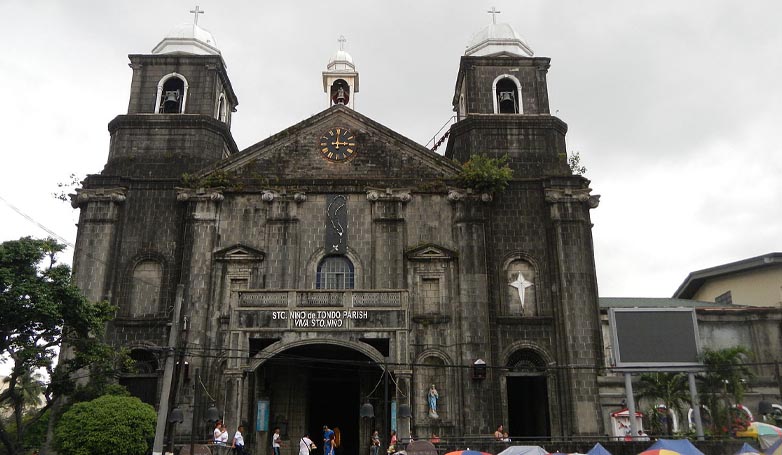
Also known as Santo Niño de Tondo Church, this Roman Catholic Church is located in the densely populated Tondo district of Manila. The current structure dates back to the mid-19th century and is built on the site where a historical church once stood. The church is most famous for housing the revered image of the Santo Niño, which is celebrated during the feast of the Santo Niño de Tondo, one of Manila’s biggest and most colorful festivals.
Facts:
- An earlier church at this site was one of the first to be constructed outside of Intramuros, the walled city of Manila, by the Augustinians in the 16th century.
- The Feast of the Santo Niño de Tondo is a major event in Tondo, drawing thousands of people annually every third Sunday of January.
- Tondo Church is also known for its educational work among the local populace and has several associated Catholic schools.
8. Santa Cruz Church: The Reflection of Filipino-Hispanic Heritage
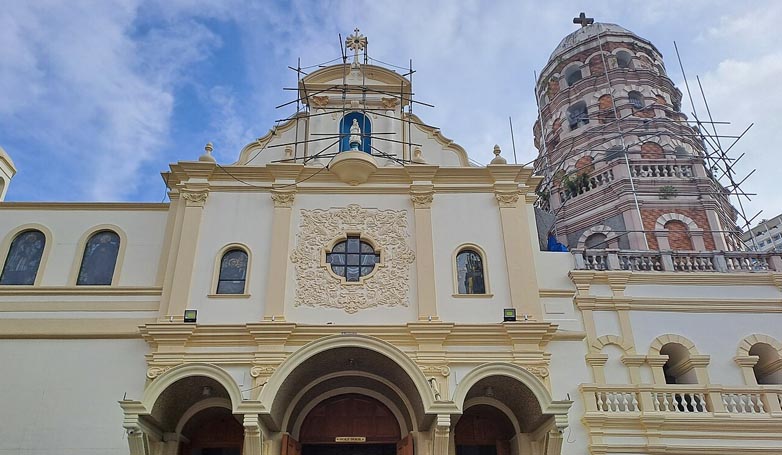
Located at the heart of the Santa Cruz district in Manila, Santa Cruz Church is a parish church that was established by the Jesuits in the early 17th century primarily for the growing Chinese immigrant population becoming Catholics. It features a unique combination of oriental details and baroque architecture. This church has also experienced destruction and reconstruction, particularly after the Battle of Manila during World War II.
Facts:
- The church stands close to the Chinese cemetery and Chinese general hospital, highlighting its historical and ongoing connections with the Chinese-Filipino community.
- The current structure was reconstructed in 1957 after the original was destroyed during the liberation of Manila in 1945.
- Santa Cruz Church is situated near the Carriedo Fountain, a historic landmark that was once the end point of Manila’s first water system.
9. San Miguel Church: A Peaceful Retreat Amidst the Bustle
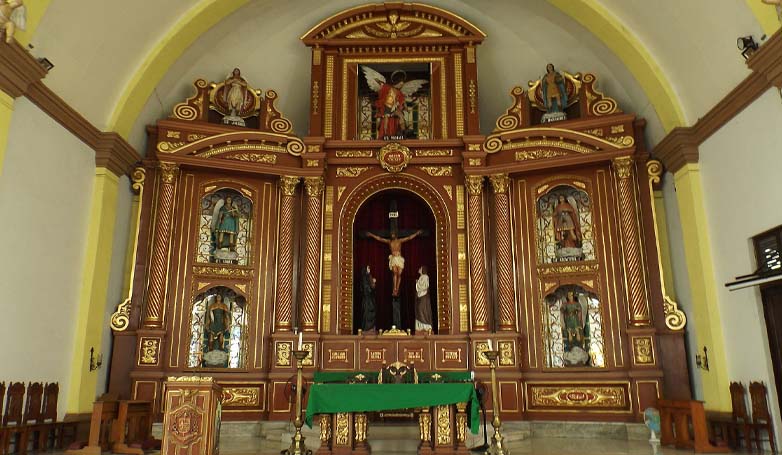
San Miguel Church, better known as San Miguel Arcangel Parish Church, is situated within the San Miguel district of Manila. The district itself and consequently the church is named after Saint Michael the Archangel. Built in the Romanesque-Byzantine architectural style, this church is known for its rich history dating back to the Spanish colonial period.
Facts:
- San Miguel Church was originally intended to cater to the spiritual needs of the non-Spanish communities during the Spanish colonial era.
- The church has survived numerous natural disasters, including earthquakes and typhoons, as well as the extensive bombing of Manila during World War II, though it has been restored since then.
- Before the Malacañang Palace became the official residence of the President of the Philippines, the area was actually more renowned for the San Miguel Church.
Conclusion
Our spiritual expedition across Manila’s landscape of cathedrals comes to an end, but the echoes of hymns and prayers linger on. These sanctuaries have narrated the tales of faith, resilience, and beauty through their impressive spires, stained glass windows, and sacred art. Whether echoing the footsteps of devoted worshippers or capturing the fascination of history enthusiasts, the cathedrals in Manila hold a special place in the heart of the city. They are not mere structures; they are cornerstones of Filipino spirituality and creativity that continue to inspire and uphold the community’s collective soul. May your journey to these divine edifices of Manila enrich your spirit and instill a deeper appreciation for the harmonious blend of the divine and the artistic.
Cathedrals in Manila FAQs
Here are the most common questions about the cathedrals in Manila.
1. Can anyone visit the cathedrals in Manila?
Yes, the cathedrals in Manila is open to visitors and worshippers alike. Tourists can appreciate the architecture and art, while Catholics can participate in the liturgical services.
2. Are there any dress requirements to enter the cathedrals in Manila?
As a place of worship, visitors are expected to dress modestly. Avoid wearing sleeveless tops, shorts, miniskirts, or any disrespectful clothing when visiting the cathedral.
3. What are the opening hours of the cathedrals in Manila?
The cathedral’s visiting hours can vary, and it is best to check their official website or contact the cathedral directly for the most up-to-date schedule. Please note that it may be closed to tourists during church services.
4. Are there guided tours available for the cathedrals in Manila?
Yes, guided tours are sometimes available, offering visitors a chance to learn more about the history and architectural features of the cathedral. It’s best to enquire at the cathedral or check online for the availability of guided tours.
5. Do the cathedrals in Manila hold regular religious services?
Yes, the cathedrals in Manila hold regular Masses and other religious services. Schedules can be found on their official website or by inquiry at the cathedral.

